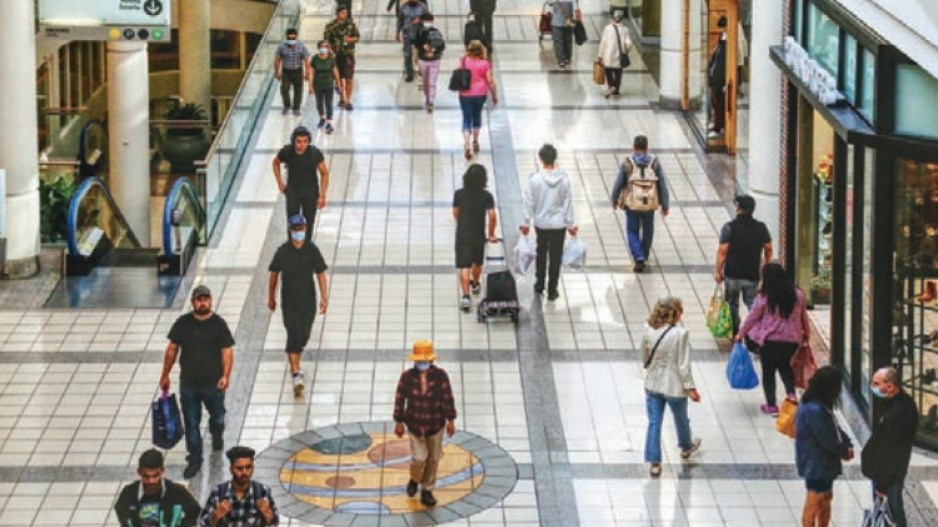Consumers are back in force at malls, but many are spending less as cost-of-living pressures bite.
Close to 90 per cent of Canadians will visit shopping malls in December, according to surveys by JLL Canada, up from 85 per cent last year. Approximately 43 per cent will shop for 30 to 90 minutes, an improvement over 37 per cent a year ago.
“People are going back to the malls feeling more comfortable and safe shopping in person compared to last year,” said Madeleine Byblow, a senior associate specializing in retail with JLL Canada in Vancouver.
The arrival of the omicron variant just in time for Christmas put a damper on mall traffic last year, but the risk of respiratory viruses this season seems to emphasizing more focused trips rather than keeping people away.
But the survey, based on a sample of 982 shoppers contacted between late October and mid-November, indicates that spending will average $412 per person. This is 13 per cent lower than last year, and effectively offsets the effect of inflation on prices.
“Canadians plan to spend almost the same amount on gifts that they spent in 2020; however, prices are not the same as two years ago,” JLL reported. “Overall consumer prices have increased on average 12 per cent since the 2020 holiday season, mostly over the past year.”
While spending last year was driven by pent-up demand for in-person experiences, a spirit of restraint is in play this year even though demand remains high.
“Most consumers report that their cost of living − food, utilities, and gas − has risen since the beginning of the pandemic, reducing their discretionary budgets,” JLL reported.
Byblow said the cost of living has always been higher in Vancouver than elsewhere in Canada, and the current environment will drive a greater percentage of consumers to brand-name discounters like Homesense, Marshalls and Nordstrom Rack both during the Christmas season and in the year ahead.
“People are way more conscious of what they’re spending,” she said. “You’ll probably see those discount banners do well this season.”
The debut of Specsavers Optical Group, a UK retailer JLL is working with to secure locations in Metro Vancouver, underscores the trend.
“It’s going to be very timely for them to enter the market given that people are going to be looking for more affordable solutions for eye care,” Byblow said.
The impact for retail landlords is minimal, however.
While consumer spending might be down, tenants aren’t necessarily leaving malls because storefront exposure is an integral part of the new omnichannel marketing environment.
While more shoppers are researching purchases online, and fewer than half are completing purchases in-store, approximately 18 per cent will use brick-and-mortar stores as pick-up points for purchases.
The in-person activity co-exists alongside online shopping, with close to 60 per cent of shoppers buying online and having products home-delivered.
The shift in consumer habits has increased the importance of mall activities.
“The big one that’s come back this year is photos with Santa,” Byblow said. “That’s obviously a reason to get families into the mall and have them stay.”
But even with lower traffic, Metro Vancouver malls will likely be more resilient than those in other markets given geographic constraints that ensure retail space doesn’t track with population growth.
“Vancouver malls always fare better because we’re geographically constrained in terms of how much retail space we can even have,” Byblow said.




